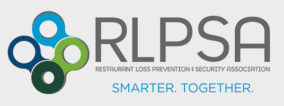Monetary/profit losses in the restaurant industry can amount to billions of dollars every year, but loss prevention policies can incorporate preventative measures to mitigate the damage wrought by these ever-increasing numbers. Of course, there’s always more to understand and more to do when it comes to LP in the restaurant industry.
Where do most losses occur?
The root causes of most losses to a business fall into three general categories:
- Internal theft
- External theft
- Employee/Vendor Error
All three of these areas obviously require their own set of rules and regulations concerning loss prevention. But as broad as these categories appear, they still have much in common.
Dealing with loss no matter the cause
Of course, it’s important to categorize, analyze, and evaluate the specific kinds of loss in an industry, but addressing the occurring loss, no matter where it originates, can be organized and deliberate. In its report, The 6 Principles of Loss Prevention, LP Innovations (LPI) urges companies to take actions dealing with loss, on six fronts.
1. Prevention
Prevention is necessary for effective long-term solutions. Powerful preventative measures can put safeguards in place, make sure resources are used wisely, and provide a framework for loss prevention actions and reactions. A prevention plan should include written, measurable policies and procedures, a workable communication plan, effective measurement instruments, dedicated resources to ensure success, and a solid commitment from management and loss prevention professionals.
2. Awareness
An effective Loss Prevention program requires buy-in from many sources; up and down the organizational hierarchy, across multiple departments/divisions, and in and outside the company. Communication channels might include newsletters, podcasts, webinars, training sessions, email blasts, and listserv information blurbs. Though the vehicles may vary, the message should always be clear, concise, complete, and consistent.
3. Compliance
LP policies and procedures only work if they are implemented and followed. Making sure everyone is on board and adhering to the LP plan will require some sort of compliance evaluation. This evaluation may take several forms from informal questioning of employees and compliance checklists to more formal compliance audits. Knowing where misunderstandings or inactions lie regarding the LP plan can help identify problem areas.
4. Detection
It’s sometimes hard to be extra-observant in familiar environments. Small changes overtime are less noticeable. When it comes to loss detection, however, it is important to not just observe changes, but rather detect what is happening in a given situation. A simple employee mistake, made over and over again because it wasn’t detected, can lead to much larger problems in the future. Detection should ultimately lead to correction.
Some steps to follow:
- Articulate a clear plan of what should be happening in all operations.
- Identify what signs to look for when detecting errors.
- Plan regular, consistent, objective, and systemic audits of compliance.
- Analyze all data from informal observations, scheduled inspections, and auditing reports.
5. Investigation
When problem areas aren’t fixed early or preventative measures don’t thwart a loss, an investigation may be necessary. This, of course, means that a loss has occurred. But now the goal is to reduce future losses. Proper investigation will require highly trained professionals who understand the legal protocols involved in the collection of evidence, invasion of privacy issues, evaluation of facts, questioning of victims and alleged perpetrators, and formal, written accusation procedures.
6. Resolution
Resolution involves the actions taken to address the problem and the implementation of a plan to prevent its recurrence. Resolution can include revisions to company policies such as better screening procedures for employees, more secure money-handling procedures, computer monitoring, up-dated training sessions, relocating surveillance cameras, etc. The two key drivers of any resolutions efforts and decisions should be the policies of the company and the human factors involved. Resolution efforts, including all post-event analysis and implementation of new policies, should be documented.
Positive outcomes from negative events can lead to future success
The process of Prevention, Awareness, Compliance, Detection, Investigation, and Resolution sets up a specific plan of action for dealing with losses that fall under the broad categories of internal theft, external theft, and human error, in many types of businesses. The LP issues that have to be addressed on a daily basis may seem mundane at times, but bigger problems may point to the need for a rigorous examination of present policies. Considering changes to work effectively for tomorrow’s business, especially in the light of an ever-shifting consumer landscape and an increasingly high-tech world can be daunting. Start with step one… move ahead with determination and vigilance…the plan will take shape.
About RLPSA
The Restaurant Loss Prevention and Security Association (formerly NFSSC) is an exclusive community of loss prevention professionals focused on helping its members minimize losses and reduce liabilities within the restaurant and food industries.
We are industry leaders sharing our collective expertise, knowledge and solutions to the challenges we face every day. Our goal is to make our members more efficient and successful in their careers by serving as the “go-to” resource for restaurant and food industry loss prevention and security professionals.
As a member-run organization, we share information about industry trends and connect a network of peers who understand the unique challenges of the job, and who collaborate to find the next best solution. We create a forum for discussion and problem-solving so that our members benefit from shared expertise. We provide professional development opportunities that are designed to meet the specific interests and concerns of restaurant and food industry professionals, and we advocate for regulations that will make our workplaces more safe and secure.
For more resources, attend our annual conference. Visit: http://www.rlpsaannualconference.com/
